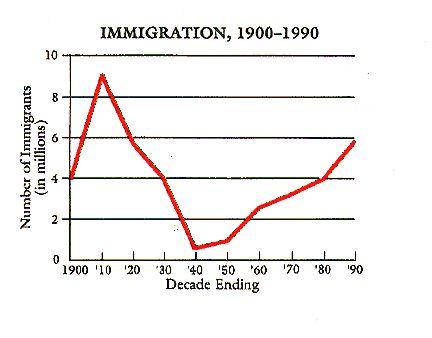
The image of model minority for Asian Americans is one the reason the "yellow peril" stereotype is fading. Although the Asian immigration rate is still rising, Americans has learned from the past that discrimination should not exist. I found this very interesting and funny because I realized the Yellow Peril stereotype began as Asian immigrant grew and took over American's wages, but today PewResearch has a studied that the median household income of Asian Americans is higher than other ethic groups. Asians are no longer a threat, but they are now the model.
This article can be very misleading. The article only mentioned about a few sub-ethic groups to present the entire Asian population. They only mentioned about ""Chinese Americans, Filipino Americans, Indian Americans, Vietnamese Americans, Korean Americans and Japanese Americans" (The Rise of Asian Americans). There are many more sub-ethic group in Asia, such as Laotian, Cambodian, Thai, Burmese and more. The origin of these Asian Americans are from less developed countries. In these less developed countries in Asia, people there are less connected with the first-world. Parents who have low or no education will lack the parenting skills to help their American born children. According to a graph provided by Census, Cambodian, Hmong and Laotian have the lowest median income in the Asian families, as a matter of fact, these groups earn as much as the nation's poorer ethic such as African Americans and Hispanics at the $30,000 to $35,000 range (Census).
Asian is a very diverse ethic group, it is the biggest race in the world. This means stereotypes that targeted Asians are misleading. These "good" stereotypes refer to Asians are good at math and Asians are musicians don't describe the whole Asian population. It is true that some Asian culture tend to focus more in the academic field, because it is one of the way they can succeed in life. I have a traditional Chinese dad who does not believe his son is creative or athletic. I was told throughout my life by my father that because I am Chinese, I must do something practical, something that will stick with me for the rest of my life. He told me not to dream about being involve in the politics because Chinese people have historical background associated with communism, therefore they are always dangerous to Westerns. Math and science are practical, developed country like the U.S. or China requires many people in that field. Let's get back to the point of this entry on why stereotypes are false and true. This Model minority stereotype is true for advance culture such as Japanese, Chinese and Korean, but for parents who are originated from southern Asia. They focus more in the agriculture field, they began to work in the farms and barns at a very young age, which explains school is not as important there. These less educated parents cannot help their kids with school works in the U.S.
Although Yellow Peril only targets Eastern Asians (mostly Chinese, but Eastern Asians shares similar physical traits), this stereotype has drifted. Today, model minority is the more popular topic. From the middle east to the very south of Asia, this continent contains peoples who act differently, look differently and better at certain things. The model minority stereotypes rose the bar for ALL Asian Americans in the U.S., which causes the society to force every Asian American to live up to that standards.






